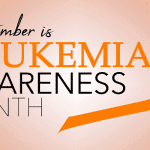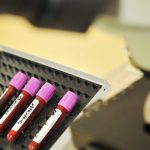What is Thrombocytopenia?
Too high a platelet count can mean an increased risk of blood clots while too few can cause several diseases. Genetic problems and faulty antibodies can lead to small clotting issues in the body, as with thrombotic thrombocytopenic purpura and thrombotic microangiopathies (TMA), or platelet damage, as with complement-mediated TMA. Caused by these specific conditions and others, thrombocytopenia is the most common and broadest of all platelet-related disorders.
Let’s start from the beginning. Platelets are one of the primary blood components, whose main function is to prevent bleeding through clotting. These cell fragments are only one-fifth of a red blood cell size and constitute only a small portion of overall blood volume. Like most blood cells, platelets are formed in bone marrow. Megakaryocytes, large bone marrow cells, fragment as they develop, resulting in platelets released into the blood.
Platelets are composed of particular proteins that allow them to bind to each other and with blood vessel linings. They continue secreting proteins to create a seal when a blood vessel breaks, stemming from external or internal bleeding.
Maintaining a healthy range of platelets is critical, as too high or too low a count can result in serious medical conditions. To be effective, platelets need to number between 150,000 to 450,000 per microliter of blood for an adult. A count below 150,000 indicates a serious condition known as thrombocytopenia.
What causes thrombocytopenia and how is it diagnosed?
Low platelet count can occur when the body fails to produce enough platelets and destroys the platelets before being used or stores too many in the spleen. Though genetic conditions can lead to thrombocytopenia, there is often an underlying health condition or lifestyle factor that causes the issue:
- Cancer: Leukemia, lymphoma and cancers that spread to the bone marrow can slow platelet production. Cancer treatments that are not localized to tumors, such as chemotherapy and radiation, also damage these cells.
- Viruses: Certain contagious viruses like chickenpox, mono and rubella can temporarily lower your platelet count.
- Aplastic anemia: Although uncommon, this disorder where blood production in the bone marrow stops is severe.
- Medicines and alcohol: Over-the-counter painkillers and certain antibiotics can slow platelet production while being used, causing drug-induced thrombocytopenia. Alcohol can have a similar effect but also cause cirrhosis of the liver, enlarging the spleen and causing platelets to build up.
- Autoimmune diseases: Immune thrombocytopenia (ITP) is a disorder where blood doesn’t clot properly. It is believed that ITP is caused by the body’s immune system accidentally attacking healthy cells, destroying platelets in the process.
- Pregnancy: While it is uncommon and relatively mild, platelets can be diluted in increased plasma levels in pregnant women.
A platelet count via a blood test is performed to diagnose thrombocytopenia. Cancer patients and others undergoing certain forms of treatment have regular blood tests to check for incidental cases.
What are the dangers of thrombocytopenia?
The defining characteristic of thrombocytopenia is blood not clotting properly. People with the condition suffer from excessive bleeding when cut and may unexpectedly experience a bleeding nose or gums. Brushing your teeth or blowing your nose can easily cause bleeding.
Heavy external bleeding should receive medical treatment immediately. Blood loss can be fatal, and unmanageable bleeding can indicate potential internal problems as well. Internal bleeding from thrombocytopenia in the brain and intestines can be fatal and often cause serious symptoms, including:
- Intense headaches
- Blood in urine and vomit
- Thick, dark blood in the stool
- Dizziness and weakness
- Enlarged spleen
Sufferers also experience irregular bruising and develop small red or purple spots on the skin called petechiae. It is common to experience varying degrees of pain in joints and muscles as well.
MAKE AN APPOINTMENT
How is thrombocytopenia treated?
The severity of thrombocytopenia can vary, with the mildest cases not needing treatment and severe instances requiring intense medical care. As a condition commonly resulting from other health issues, such as cancer, thrombocytopenia often naturally goes away as the underlying cause is treated. When receiving chemotherapy, doctors may adjust chemo dosages or prescribe medication.
For severe cases, doctors often prescribe medicines called corticosteroids to reduce platelet destruction. Medications can also be used to increase platelet production and slow autoimmune responses. For those at high risk for bleeding, blood or platelet transfusions can be performed to more rapidly replace lost blood. For those suffering from ITP, removing the spleen, a splenectomy, is sometimes performed if medicines are ineffective.
If diagnosed with thrombocytopenia, there are ways to reduce your risks at home. Avoiding medicines like ibuprofen and aspirin can reduce the risk of bleeding. Avoid injuries such as cuts, burns and bruises to prevent severe bleeding incidents. You may need to restrict your activities, especially sports, or wear special protective gear to stay safe.
Help for thrombocytopenia in Raleigh, NC
The critical first step in managing thrombocytopenia is partnering with your doctor for accurate testing and an appropriate treatment plan. Promptly report signs and symptoms to your doctor to avoid sudden bleeding risk. Talk with your doctor about any over-the-counter medicines, supplements and natural remedies to ensure they will not contribute to worsening symptoms.
The medical team at Personalized Hematology/Oncology is trained to address all types of blood disorders, including thrombocytopenia. If you have symptoms associated with this disease, contact us for an appointment.





